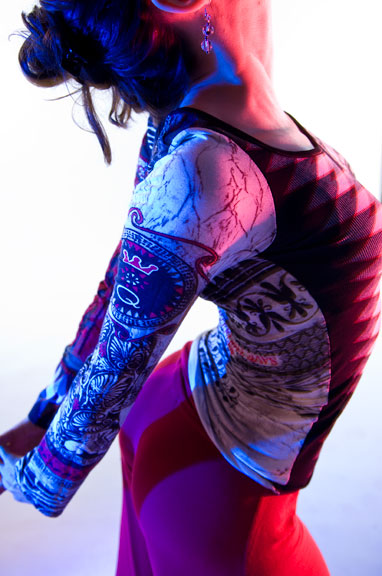I have danced many beautiful hours of Tango between midnight and 3am.
Actually, the local who gave me the address of La Viruta, where I went for my first-ever Tango experience in Buenos Aires, said conspiratorially as he passed the slip of paper, “Don’t go before midnight.”
On my second visit, and my third visit, I remember weeks of getting dressed at midnight, showing up to the evening’s first milonga at 1am, and then walking with everyone to the next milonga around 3:30am. It was a very special and unusual kind of experience!
Hm, but, I also remember freezing on my way home, and getting so sick that the rest of my trip was spent in bed. I remember a few creepy characters from those late nights at Tango. I remember being robbed.
I also remember the charming Estudio Dinzel, where there was daytime practice from 10am til 10pm. I think I felt the most connected there. There was a courtyard, a little garden, where people would sit and chat between bouts of dancing. One time a couple of dancers went out and bought a big jar of dulce de leche and warmed up some crepes, we all snacked and passed mate. I learned so much in those long, light, sensual days.
The Tango movement is taking flight in the U.S. and it will be interesting to see how its power becomes fully integrated into American culture - American culture with its daytime work ethic and bright early mornings. It would be natural if the early-evening and daytime dancing that are part of the Tango scene in Argentina become a bigger anchor of Tango socializing here in the States.
Dancing in daylight is beautiful and natural and relaxed and sexy. And as we as a culture transition to a healthier and more sustainable way of integrating Argentine Tango into our lives, we can be aware of the voices inside our heads that are holding on to a paradigm that may not fit our lives:
Tango dancers, do you find yourself believing any of these myths about late-night dancing?
Myth #1: “Being at milongas late at night is the only way to achieve coolness, status and influence.”
I guess I used to think this because of how mysterious and impenetrable the late-night milonga scene was to me. Over time it's just become like any other party scene, though.
What I've learned is that in Tango, status is accrued over time, through sustained and committed practice, study and exploration; through caring devotion to the people in the community; through an unflagging impulse to connect and stay connected on many levels. All of this can be and has been achieved without being a night-owl.
Myth #2: “The good dancers are the ones who stay up all night."
Hmmmm. Sounds a bit black and white to me. Let's examine.
Sometimes the most dedicated and experienced dancers do stay or arrive late - like, to La Viruta - because it can be more fun when the floor clears out a bit. But dancers who love Tango are generally pretty free and excited to dance, well, ALL the time, and that includes during the daytime, too.
Actually, probably they are practicing at home right NOW, and if they found out there was a rockin' milonga going on, they'd probably pick up and go out to it.
I’ve definitely noticed that highly experienced and delightful dancers, whose dance is enchanting and has deepened over years of committed growth (combined with a set of stable life-practices that promote balance and creativity), also often really love to get a full night of sleep.
Myth #3: "Dancing til 4 or 5am is the only way to be ‘authentically Argentine.’”
That’s not true. People dance at all hours of the day in Argentina.
Now, is there something romantic and mysterious about dancing deep into the night? Yeah! Is there something gorgeous about being awake when most other people aren’t, participating in something inexpressibly beautiful and enchanted? Totally! Does it need to be something you kill yourself to do several times a week to keep up and be part of things? I don’t think so.
There are some wonderful fun late-night events in Tango! Lovely to do them occasionally and really let it rip. But there’s no need to go around sleep deprived, drowsy as you speed alone down highways at 5am. No need to exhaust ourselves, get sick, get grumpy, end up doing worse quality work and stressing our relationships. Instead, we can find (or create!) beautiful daytime alternatives for weaving amazing tango experiences into our lives. (Ladies, check out Ariana Huffington’s wonderful Sleep Challenge, a worthy, transformative, and deeply sane idea!)
Let’s all be creative and unafraid, and seek to discover a truly healthy and even authentically American way of enjoying the gorgeousness of social Tango dancing that includes enough sleep, and more sunshine. Dancers, let's demand/create/support/organize awesome daytime events! And let's all embrace the many different lifestyles that want to participate passionately in Tango, including those who sleep at night.






